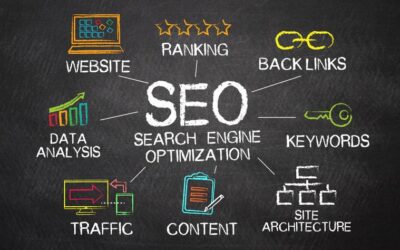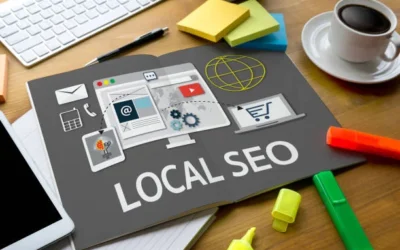How to Maximize Google Ads in 2025
Table of Contents:
- Introduction to Google Ads in 2025
- Key Changes in the Google Ads Ecosystem
- 5 Essential Questions Answered
- Advanced Strategies to Maximize Google Ads
- Tools & Automation
- Common Mistakes to Avoid
- Industry-Specific Considerations
- Measuring Success Beyond Clicks
- Future Trends and Innovations
- Case Study: A 2025 Google Ads Success Story
- Expert Tips from Top Google Ads Strategists
- Final Thoughts & Call to Action
1. Introduction to Google Ads in 2025
Google Ads, formerly known as Google AdWords, has undergone significant transformations since its inception. With advancements in machine learning, automation, and user behavior analytics, advertisers in 2025 are presented with powerful tools but also complex challenges. To succeed, it’s not just about having a big budget. It’s about smart targeting, real-time adaptability, and a deep understanding of your audience.
More than 90% of internet users interact with a Google product daily, making it an essential touchpoint in any digital marketing strategy. However, competition has also increased, making every click and conversion more valuable and expensive. Mastering the platform is not optional; it’s a necessity for businesses that want to grow.
2. Key Changes in the Google Ads Ecosystem
In 2025, several changes have defined how advertisers approach campaigns:
Google’s AI is more advanced than ever, influencing everything from ad placements to bidding strategies. Smart Bidding has improved significantly, with Target ROAS and Maximize Conversions now highly recommended for most campaign types. AI also aids in optimizing creatives, automating extensions, and dynamically adjusting budgets.
The phase-out of third-party cookies has forced advertisers to rely on first-party data. Google’s “Privacy Sandbox” has introduced new APIs that enable targeted advertising while respecting user privacy. Technologies like Federated Learning of Cohorts (FLoC) have been replaced by more privacy-centric alternatives such as Topics API.

Responsive Search Ads (RSAs) are now the default. These automatically test different headline and description combinations to serve the most effective versions to users. Advertisers should focus more on message diversity and allow the algorithm to test what resonates with their target audience.
3. 5 Essential Questions Answered
Answer: The best bidding strategy depends on your goals. For sales or lead generation, targeting a high Return on Ad Spend (ROAS) and Maximizing Conversions are excellent strategies. For brand awareness, Maximize Clicks can be a valuable resource. Use Smart Bidding and let Google’s AI optimize your bids based on real-time signals layer bidding with audience and device modifiers for more precision.
Answer: Quality Score still hinges on three main factors:
- Expected CTR – Write compelling ad copy.
- Ad Relevance – Use tightly themed ad groups.
- Landing Page Experience – Ensure fast load times, mobile optimization, and high relevance to ad content.
Use A/B testing, and tools like Google Optimize to refine your landing pages. Additionally, utilize dynamic keyword insertion (DKI) and site speed audits to enhance user experience and relevance.
Answer: Critical. In 2025, audience signals such as:
- In-Market Audiences
- Affinity Segments
- Customer Match
- First-Party Data Uploads
…are critical. Use these to guide Google’s AI and ensure your ads are shown to the right people. Custom intent audiences created from high-value pages also remain powerful.
Answer: Yes, but with caution. Performance Max (PMax) campaigns cover all of Google’s inventory in a single campaign. They are great for:
- E-commerce
- Local services
- Lead generation with broad targeting
However, transparency remains a concern. Ensure that you segment by product categories and monitor performance closely. Supplement with traditional search campaigns for tighter control over keyword targeting.
4. Advanced Strategies to Maximize Google Ads
Upload customer lists, newsletter subscribers, and CRM contacts into Google Ads. Create Lookalike Audiences using Customer Match. Track lifetime value (LTV) and segment audiences based on recency, frequency, and monetary value.
Craft multiple headlines and descriptions. Test emotional triggers, value propositions, and CTAs. Google’s algorithm will pick the best combinations. Use pinning for critical messages while still enabling automation.
Tell your brand story through YouTube Shorts, Discovery, and Demand Gen campaigns. These have higher engagement and can complement search intent. Build sequences of video ads that guide prospects through the funnel.
Use GA4’s event-based model: track form submissions, phone clicks, purchases, and micro-conversions. Accurate tracking enables better bidding. Set up conversion values and differentiate between hard and soft conversions.
5. Tools & Automation

- Google Ads Editor: Bulk edits, offline changes
- GA4 + Google Tag Manager: Unified measurement
- Scripts & Rules: Automate budget control and bidding logic
- Third-party AI tools: Tools like Optmyzr, WordStream, and Adzooma help fine-tune campaigns with external insights
- SEMrush & Ahrefs: Keyword and competitor analysis
- Looker Studio: Advanced reporting dashboards
6. Common Mistakes to Avoid
- Ignoring Negative Keywords: Always refine keyword lists to reduce waste.
- Skipping A/B Testing: Run tests for ads, extensions, and landing pages.
- No Clear CTA: Always include strong calls to action, such as “Buy Now,” “Get a Quote,” or “Schedule Your Free Consultation.”
- Set and Forget: Regular audits are essential. Check placements, device performance, and demographics.
- Over-Reliance on Automation: While automation is powerful, human oversight is key.
- Lack of Audience Segmentation: Targeting everyone means targeting no one.
7. Industry-Specific Considerations
Focus on Shopping and Performance Max campaigns. Use product feed optimization and leverage merchant promotions.
Geo-targeting and call extensions are key. Use ad scheduling and local campaigns.
8. Measuring Success Beyond Clicks
While CTR and CPC are essential, they go beyond basic metrics:
- ROAS: Return on Ad Spend
- Customer Lifetime Value (CLTV): Long-term value from conversions
- Conversion Rate: How well your ads lead to actual results
- Engagement Time: GA4’s engagement metrics
9. Future Trends and Innovations
To truly understand how to maximize Google Ads in 2025, we must look beyond current best practices and consider the innovations shaping the future of digital advertising.
Google is expanding its AI-powered creative tools. Soon, advertisers will be able to generate full ad campaigns from a single prompt using generative AI. This includes headlines, descriptions, image suggestions, and even video scripts tailored to your audience segments.

As natural language processing evolves, users are interacting with search engines in more conversational ways. Google is experimenting with conversational ad units that allow users to engage in a back-and-forth conversation before clicking. Advertisers must prepare content that mimics human-like dialogue.
With improvements in predictive analytics, Google Ads will start recommending not only whom to target but also when and how to target them. Advertisers will be able to forecast future buyer behavior and schedule campaigns to align with key stages of the buyer’s lifecycle.
Voice search continues to grow. Ads integrated within voice assistant results will become more common, especially for local and service-based businesses. Structuring your campaigns to capture voice intent (using long-tail keywords and natural language) is crucial.
10. Case Study: A 2025 Google Ads Success Story
Let’s look at a real-world example to understand how businesses can successfully maximize Google Ads in 2025. Imagine a mid-sized eCommerce company named EcoStyle Apparel, which specializes in eco-friendly fashion. In early 2025, the company faced increased competition and rising costs associated with customer acquisition.
EcoStyle’s main challenges included:
- Inefficient use of keywords and low-quality Scores
- Lack of automation and bid optimization
- Fragmented campaigns across devices
- Underutilized audience targeting features
The company partnered with a digital marketing agency that implemented a structured plan:
1. Restructured Campaigns: They broke down their campaigns by product line and user intent, transitioning from broad match keywords to a balanced mix of exact match and phrase match keywords. This increased ad relevance.
2. Leveraged Performance Max: By consolidating campaigns into Performance Max, they were able to reach customers across Search, Display, YouTube, Gmail, and Discover without duplicating efforts.
3. Enhanced Data Collection: Utilizing GA4, server-side tagging, and Enhanced Conversions, they developed more accurate attribution models and refined their bidding strategy.
4. First-Party Data Integration: EcoStyle uploaded customer email lists, created lookalike audiences, and used Customer Match to tailor messaging.
6. Automated Rules: Scripts were used to monitor CPC thresholds and pause underperforming assets during periods of low performance.
After three months of optimization:
- Conversion Rate increased by 41%
- Cost-per-acquisition (CPA) dropped by 33%
- ROAS improved by 58%
- Engagement time on landing pages went up by 27%
By the end of Q2 2025, EcoStyle not only exceeded revenue targets but built a sustainable ad structure for future scalability.
11. Expert Tips from Top Google Ads Strategists
To deepen your understanding and help you extract maximum value from your advertising efforts, we’ve compiled key insights from industry leaders actively managing millions of dollars in ad spending each year. These expert tips reflect the practical realities of maximizing Google Ads in 2025:
By implementing these insights, you can elevate your strategy beyond just clicks and impressions, creating lasting value across the entire customer journey. Remember, Google Ads’ success in 2025 is no longer just a function of budget. It’s a function of precision, testing, and persistence.
Final Thoughts & Call to Action
Google Ads in 2025 presents an incredible opportunity for growth, but success requires adaptation. The days of simple keyword targeting are behind us. Today, maximizing your impact means integrating automation, embracing audience-based marketing, and continually optimizing with data-driven decisions.
Whether you’re a startup looking to acquire your first leads, an eCommerce brand trying to scale your product reach, or an established business ready to take advantage of cutting-edge advertising, Google Ads offers scale, flexibility, and insights to support your goals.
But mastering Google Ads isn’t just about tools. It’s about strategy, creativity, and expertise. It’s about understanding the buyer journey, leveraging advanced analytics, and aligning campaign execution with business objectives. As new tools emerge and the digital landscape evolves, agility will be your biggest asset.
Consider the exponential power of combining your CRM data with predictive models, experimenting with multi-channel video storytelling, and using micro-moments to capture high-intent traffic. Every small optimization, from ad schedule adjustments to audience layering, has the potential to significantly boost ROI.
Whether you manage your Google Ads campaigns in-house or outsource to an agency, make sure your team is consistently staying updated on policy changes, beta feature rollouts, and strategic trends. Training, auditing, and continuous improvement should be core to your workflow.

With years of proven experience, expert strategists, and an unrelenting commitment to ROI, Excell is your go-to team for all things Google Ads. From initial audits to hands-on campaign management, we’re here to help you get results.
📞 Contact us today and Book your free discovery call to get done for your services and discover how Excell can transform your digital marketing!
Contact us:
EXCELL INDUSTRIES LLC
6420 Richmond Ave., Ste 470
Houston, TX, USA
Phone: +1 832-850-4292
Email: info@excellofficial.com







